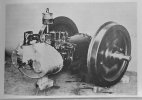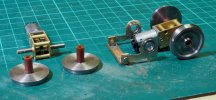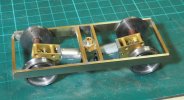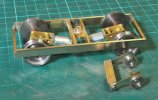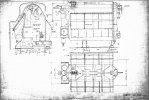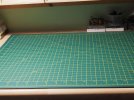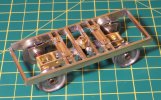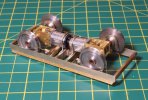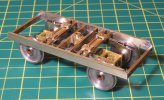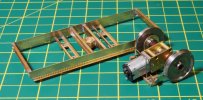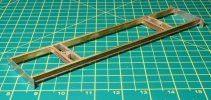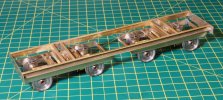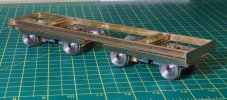adrian
Flying Squad
As alluded to in my general workbench thread I have decided to return to a little scratch building as light relief from kit building, with 2 projects started. I'll probably flit from one to the other as I ponder on the next stage of the build. However the Sentinel is the first one to see any real progress - so this was the taster I left with members.
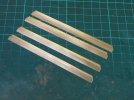
These form the beginning of Sentinel Job number 9129 which will require a little background information.
From my previous postings it is fairly evident I have a penchant for Sentinels, my first effort was a scratch built Y10, I've actually built 2 of them and the LNER only ever had 2 in the class! In scratch building I wanted to build something that wasn't available in a kit and be something slightly different and quirky. A couple of years ago the Industrial Railway Society published a nice book on Sentinel Locomotives and Railcars which I added to my collection. Whilst flicking though it I happened across Sentinel 9129. This was referenced in previous Sentinel bibles "The Sentinel" by A&J Thomas as a purely drawing board proposal. However the IRS book fleshed out a few more details about the loco.
The loco 9129 was a design of "General Purpose" engine advertised by Sentinel for a custom built range using a Doble twin cylinder axle drive unit where the customer could specify gauge and number of axles etc. The IRS book states that LNER loco committee agreed to the purchase of 9129 in 1934, the engine was to be painted in Goods engine black and lined red with a running number of 24. Allegedly the work was subcontracted out to Bagnall Ltd of Stafford for the build and a number of components were built and "at least one engine was built and tested" before the contract was cancelled in 1936. That was enough for me - to make something different the following is a build of Sentinel 9129.
I have only the following engineering diagram to work from because as far as I know there are no photos of any loco built. However I will use some of the other builds for Peru and Columbia to have a guess at the final configuration.
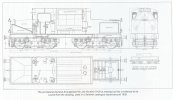
So work started on the power units, the posted images forming the sides of bogies - tacked together with some U channel.
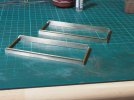
The central pivot was turned from some hex brass
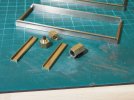
From the drawing the central bolster was formed from a couple of U channels and the hex brass provided a suitable spacing to match the drawing.
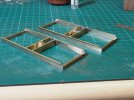
The next stage is to work out the drive arrangement.

These form the beginning of Sentinel Job number 9129 which will require a little background information.
From my previous postings it is fairly evident I have a penchant for Sentinels, my first effort was a scratch built Y10, I've actually built 2 of them and the LNER only ever had 2 in the class! In scratch building I wanted to build something that wasn't available in a kit and be something slightly different and quirky. A couple of years ago the Industrial Railway Society published a nice book on Sentinel Locomotives and Railcars which I added to my collection. Whilst flicking though it I happened across Sentinel 9129. This was referenced in previous Sentinel bibles "The Sentinel" by A&J Thomas as a purely drawing board proposal. However the IRS book fleshed out a few more details about the loco.
The loco 9129 was a design of "General Purpose" engine advertised by Sentinel for a custom built range using a Doble twin cylinder axle drive unit where the customer could specify gauge and number of axles etc. The IRS book states that LNER loco committee agreed to the purchase of 9129 in 1934, the engine was to be painted in Goods engine black and lined red with a running number of 24. Allegedly the work was subcontracted out to Bagnall Ltd of Stafford for the build and a number of components were built and "at least one engine was built and tested" before the contract was cancelled in 1936. That was enough for me - to make something different the following is a build of Sentinel 9129.
I have only the following engineering diagram to work from because as far as I know there are no photos of any loco built. However I will use some of the other builds for Peru and Columbia to have a guess at the final configuration.

So work started on the power units, the posted images forming the sides of bogies - tacked together with some U channel.

The central pivot was turned from some hex brass

From the drawing the central bolster was formed from a couple of U channels and the hex brass provided a suitable spacing to match the drawing.

The next stage is to work out the drive arrangement.

